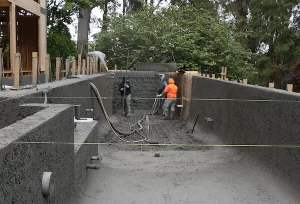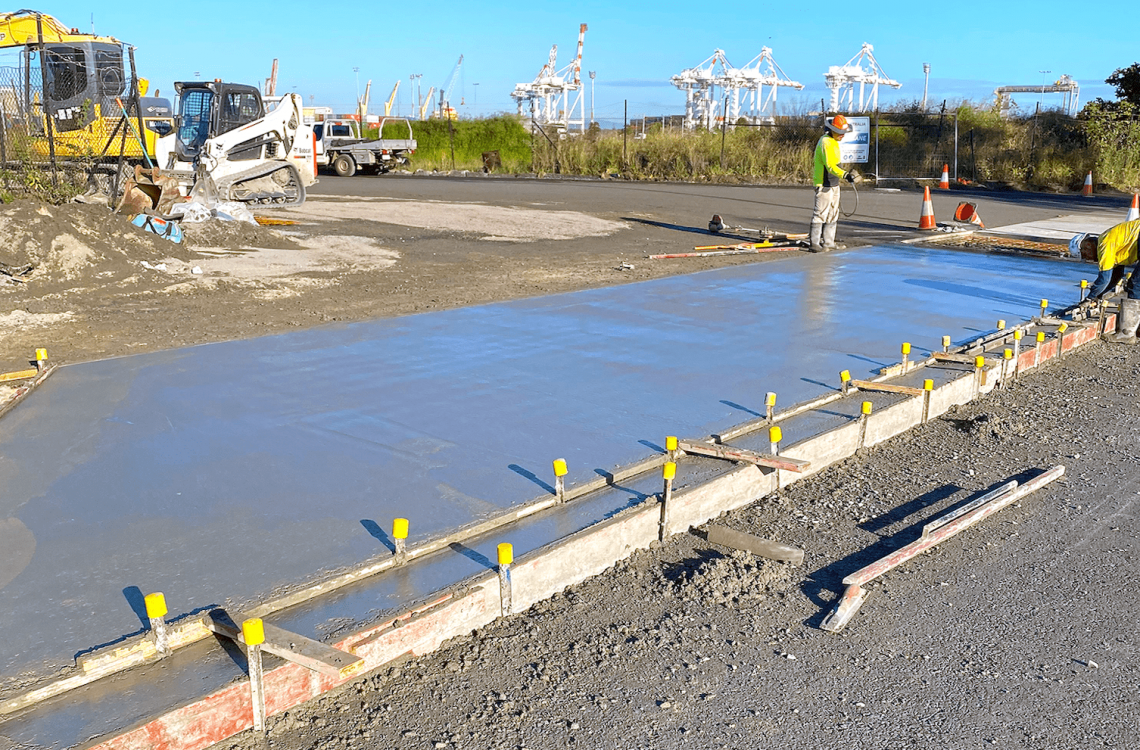With help from Australian universities, a new carbon nanotube liquid additive that extends the design life of concrete projects is safe as well as effective.
An innovative process developed here in Australia is now bringing exceptional levels of strength and durability to concrete through EdenCrete products.
The idea originated when scientists wanted to find uses for the carbon nanotubes (CNTs) created when converting methane gas into hydrogen. Scientists found that adding CNTs to a concrete mix created stronger, more durable structures with many positive characteristics that surpass those provided by other mixes.
CNTs are very fine and extremely tough. When added to concrete mixtures the nanotubes fill the spaces at a nanoscopic level between the hydrated cement particles. As the concrete cures, the nanotubes create millions of flexible, strong carbon bridges throughout the structure.
The result is improved abrasion, flexural, tensile, compressive and permeability characteristics.
Allan Godsk Larsen is Chief Scientist at Eden Innovations Ltd, the company that commercialised the pyrolytic process and created the EdenCrete range of products. They partnered with the University of Queensland, Monash University and Deakin University throughout the various stages of development.

“We worked closely with industry to develop these products. It’s one of the main reasons that the mix is provided in liquid form and not powdered form. EdenCrete can help to improve the design-life of structures, and allows for more sustainable choices to be made by reducing the overall amount of cement used in structures,” said Larsen.
Australian results from tests show exceptional performance can be achieved when EdenCrete is used. In a car park environment in Brisbane, the design life of a structure was increased by 27 per cent to 90 years and saw a 27 per cent reduction in overall repair costs, according to the Life-365 durability model. A similar car park environment test in Victoria saw a 55.7 per cent longer initial life, while tidal environments saw up to 133 per cent extra initial life.
The product is suited for engineers looking for additional durability in marine, underground, or oil and mineral sands environments, where corrosion is a concern. It also has positive attributes for environments needing improved abrasion resistance such as roads, pavements, heavy traffic, commercial and industrial areas.
While there are safety concerns when dealing with carbon nanotubes in dry powdered form, EdenCrete products only come as liquid mixes for safe handling. Once bonded and crystallised within the concrete, carbon nanotubes are very difficult to return to their earlier form.
Tests by Eden Innovations also show that CNTs remain bound in the matrix of concrete and that actions such as sawing, crushing or dismantling do not cause them to become freed or airborne.
The EdenCrete products were first commercialised in the US where they have found support among key infrastructure organisations such as the Department of Transport in Georgia. Following successful trials, the Department has added EdenCrete as a specified liquid additive to use for any highway repairs.

EdenCrete has just recently become available in Australia and is finding advocates in the construction industry. Brodie Chan is a Project Engineer at Port of Brisbane, which has recently been trialling EdenCrete. Chan says the trial has yielded positive results with enhanced porosity, durability, compressed strength and other characteristics.
“For us, we take great care around maximising the expected life of structures in and around our ports. They are extremely expensive to replace at a later stage, so we take great interest in products that can extend the life of concrete structures, roads and bridges in or around a marine environment,” said Chan.
Tasha Eagle is the ANZ Business Development Manager for Concrete Admixtures and Cement Additives for Parchem Construction Supplies, which is part of DuluxGroup and the licensed distributor of EdenCrete in Australia and New Zealand. She has been liaising with construction companies throughout the region to make sure they are aware of the new product.
“We’re here to help engineers and companies around Australia make use of the wonderful properties of EdenCrete. We can share Allan’s test results and provide other resources for use with the Life-365 open-source software. We’ll also supply the parameters for you to work out simulated age of structures across various environments using the chloride diffusion coefficient test results,” said Eagle.
“EdenCrete brings the strength of carbon fibre to concrete while coming from a sustainable process that helps to reduce methane emissions. There are plenty of ways it can be used to help make structures stronger, more durable and reduce our reliance on other, less sustainable materials.”
Prior to COVID-19, and exacerbated by the Suez Canal blockage, supplies of silica fume have been difficult to source here in Australia, according to feedback Parchem has received from construction companies. Silica fume is an effective pozzolanic material added to concrete for improved strength and abrasion resistance. EdenCrete can be added to these concrete mixes, significantly reducing the amount of silica fume required to achieve the improved characteristics.
There are two types of EdenCrete products currently available, each with a shelf-life of 12 months. EdenCrete is designed to add strength and durability to any type of concrete mix. EdenCrete Pz is designed to add strength and durability for concrete using fly ash and/or slag as a replacement for cement.
Contact Tasha Eagle from Parchem for more information about EdenCrete products or to discuss their suitability for use across your construction projects.





The bridge you have featured in your article is the balanced cantilever section of the Seacliff Bridge, Lawrence Hargrave Drive, NSW. It was built and designed by an Alliance led by Barclay Mowlem Ltd in 2005.
As far as I can recall your product was not used in the concrete for the bridge, thus your article is a mis-representation.
I recommend that you give acknowledgement to the Contractor, and design Alliance in any future articles. I am writing a similar note to the editors of CREATE magazine.
I am the former Managing Director of Barclay Mowlem Ltd (FIEAust; FTSE, FAICD)
Could help strength spun concrete power poles ?